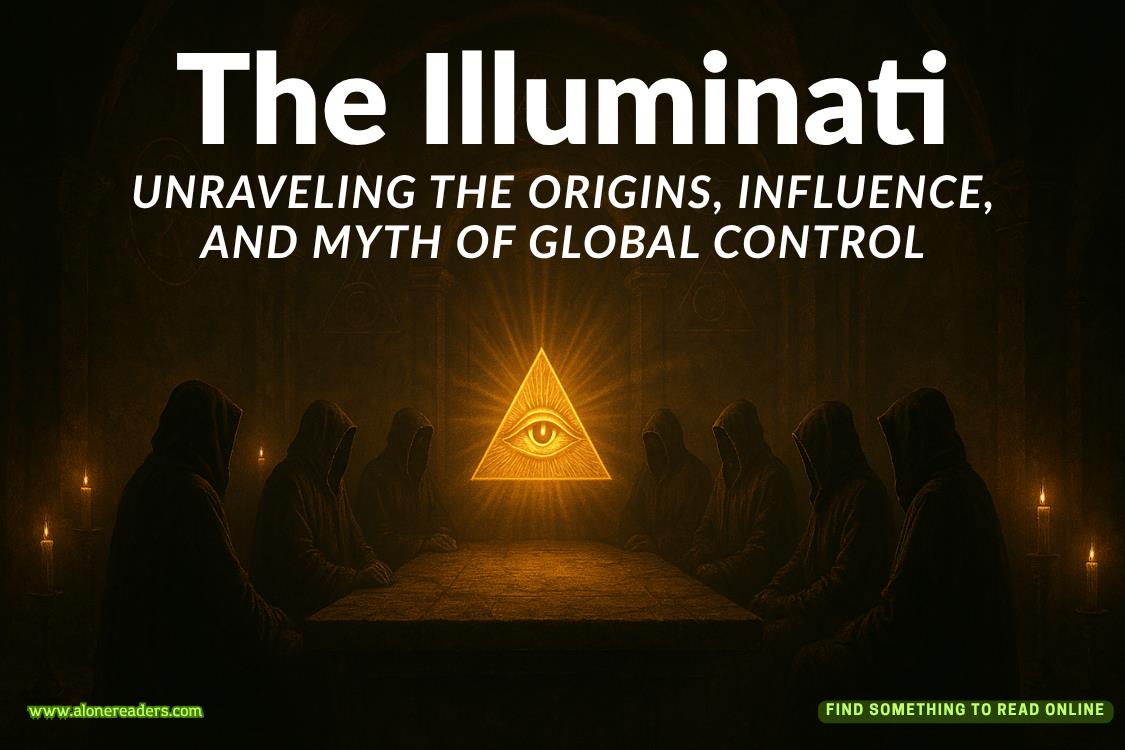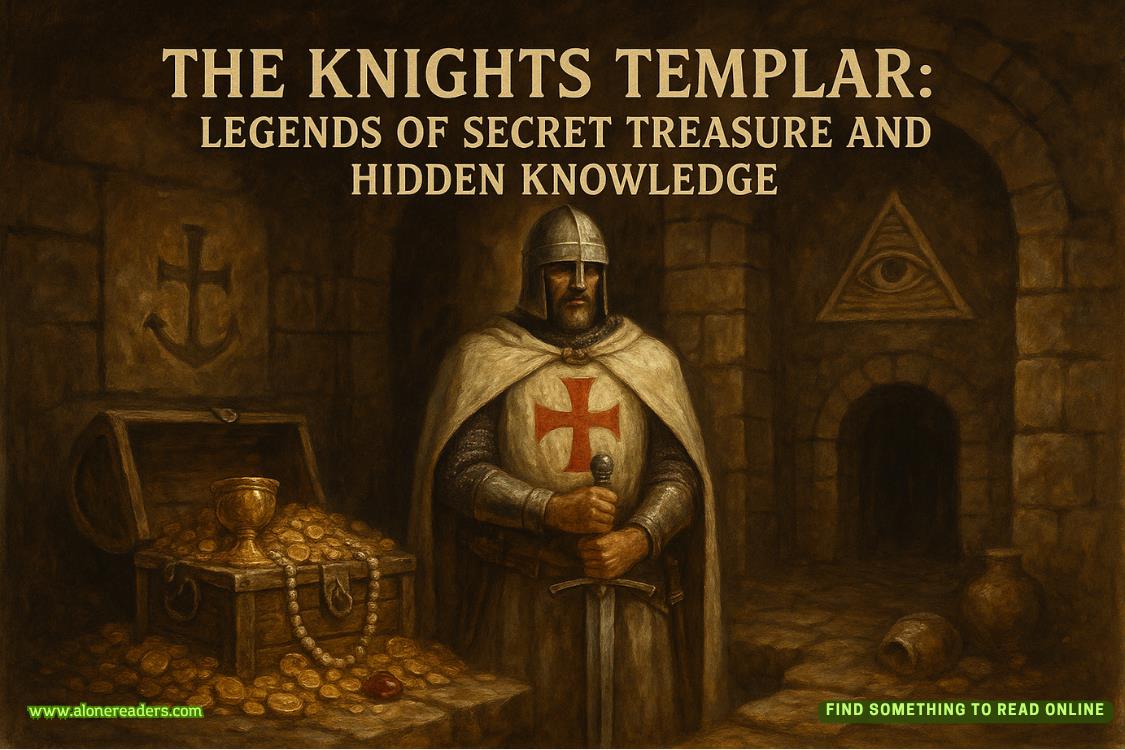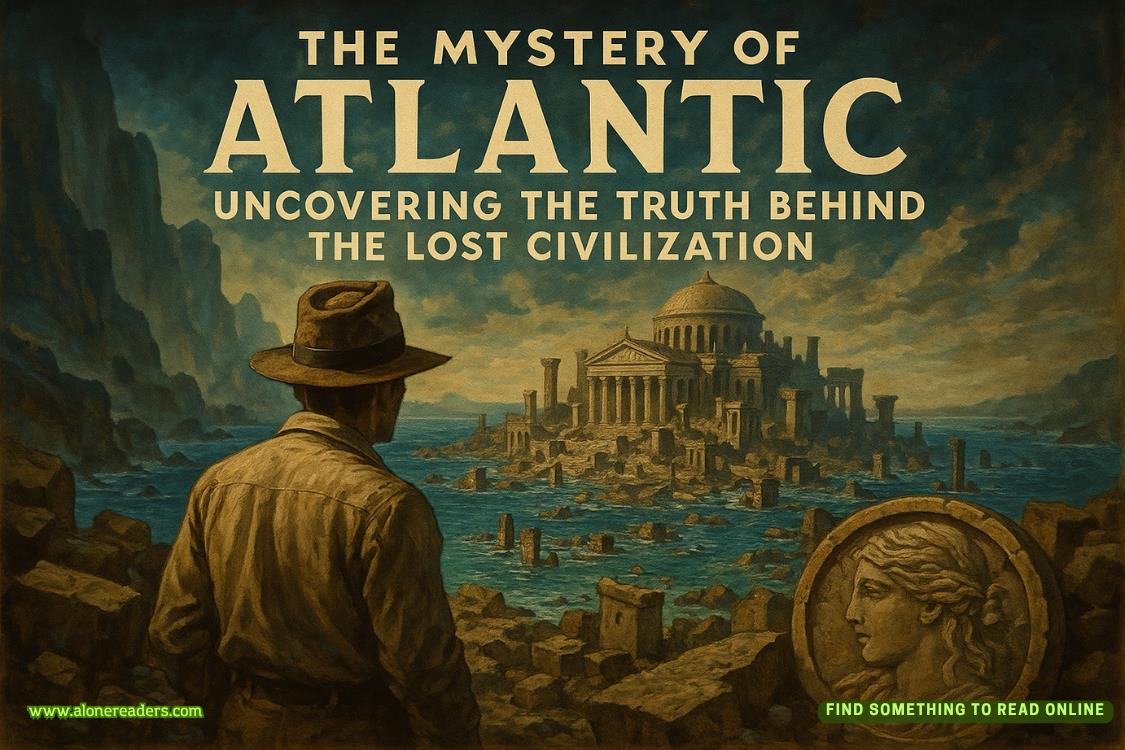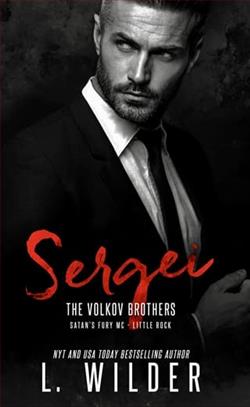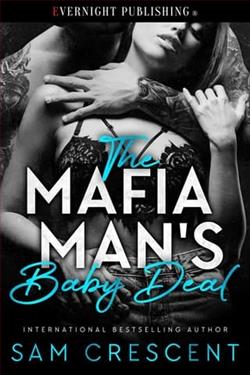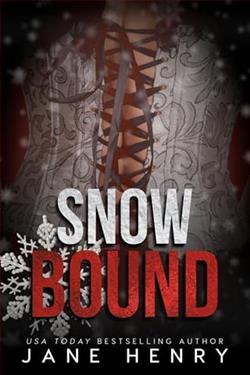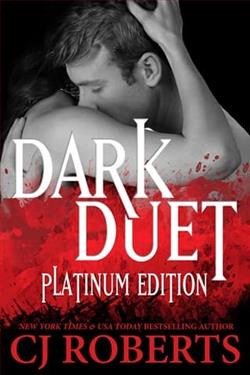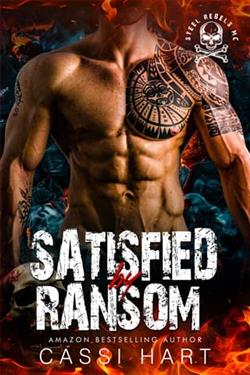Page 1 of A Trail of Fire (Lord John Grey 3.5)
Mistress of the Bulge
When The Scottish Prisoner was published, a bookseller friend turned to me in delight and said, ‘I think you’ve invented a new literary form – the bulge!’ In other words, a story that is neither sequel nor prequel, but lives inside an existing body of work. Now, frankly, I wish she had thought of something more poetic to describe my efforts, but I have to admit that ‘bulge’ has a bit more punch – with its vivid imagery of a snake that’s swallowed some large and squirming prey – than colourless terms like ‘interpolation’ or ‘inclusion’.
I first wrote a short story fifteen years ago, mostly to see whether I could write something shorter than 300,000 words. It was an interesting technical challenge, but ‘short’ is not what you’d call one of my great natural skills. Still, I found the experience interesting, and since then have written the occasional short (well . . . sort of; it’s all relative, isn’t it?) piece when invited to contribute to an anthology now and then.
Even though these stories are relatively brief, they’re almost all connected to (and integral parts of) the large series of novels that includes both the huge Outlander novels and the smaller historical mysteries focused on the character of Lord John Grey. These novellas too are bulges; stories that fill a lacuna in the main story or explore the life and times of secondary characters, while connecting with the existing parts of the series.
Now, an anthology is a collection of stories written by a number of different authors. It’s a good way to sample the styles and voices of writers you might not usually encounter, or try an unfamiliar genre. Still, some readers may be chiefly interested in a particular favourite writer, and not want to buy an anthology for the sake of just one short story or novella.1
A few years ago, I collected three novellas about Lord John Grey (two of them previously published in anthologies, one written specifically for the new collection) into a single volume, and titled it Lord John and the Hand of Devils. Readers enjoyed having these pieces of Lord John’s story conveniently to hand, and so I figured that whenever I had a few more short pieces, I’d publish another collection. This is it.
This volume includes two Lord John novellas: The Custom of the Army, and Lord John and the Plague of Zombies. In terms of the overall chronology of the novels and shorter pieces involving his lordship, Custom follows the novel Brotherhood of the Blade and precedes the novel The Scottish Prisoner. Zombies follows The Scottish Prisoner (though it was in fact written while I was writing Prisoner, and was published before the novel was finished, and if you don’t think that was a swift bit of juggling . . .). You’ll find an overall chronology of both the main Outlander novels and the Lord John novels and novellas at the back of this book.
The Custom of the Army is set in 1759, in London and Quebec, and while it probably was all the fault of the electric eel, Lord John finds himself obliged to leave London for the wilds of Canada and the dangerous proximity of James Wolfe, the British general besieging the Citadel of Quebec. (‘Melodramatic ass,’ was what Hal had said, hastily briefing him before his departure. ‘Showy, bad judgement, terrible strategist. Has the Devil’s own luck, though, I’ll give him that. Don’t follow him into anything stupid.’)
Plague of Zombies takes place in 1761, on the island of Jamaica, where Lord John is sent as commander of a battalion intended to suppress what seems to be a revolt of the escaped slaves called maroons. But things are not always what they seem. (He rubbed the rest of the blood from his hand with the hem of his banyan, and the cold horror of the last few minutes faded into a glowing coal of anger, hot in the pit of his stomach. He’d been a soldier most of his life; he’d killed. He’d seen the dead on battlefields. And one thing he knew for a fact. Dead men don’t bleed.)
Now, you’ll also find two other stories in this book: A Leaf on the Wind of All Hallows, and The Space Between. Leaf is the story of Roger MacKenzie’s parents, Jerry and Dolly, and takes place during WWII. (It was cold in the room, and she hugged herself. She was wearing nothing but Jerry’s string vest – he thought she looked erotic in it – ‘lewd,’ he said, approving, his Highland accent making the word sound really dirty – and the thought made her smile. The thin cotton clung to her breasts, true enough, and her nipples poked out something scandalous, if only from the chill. She wanted to go crawl in next to him, longing for his warmth, longing to keep touching him for as long as they had.)
The Space Between follows the events in the novel An Echo in the Bone, is set in Paris in 1778, and concerns Michael Murray (Young Ian Murray’s elder brother), Joan MacKimmie (Marsali MacKimmie Fraser’s younger sister), Master Raymond, Mother Hildegarde (yes, she’s still alive), the Comte St Germain (ditto – surely you didn’t think he was really dead, did you?), and a number of other interesting people. (‘What a waste of a wonderful arse,’ Monsieur Brechin remarked in French, watching Joan’s ascent from the far side of the cabin. ‘And mon Dieu, those legs! Imagine those wrapped around your back, eh? Would you have her keep the striped stockings on? I would.’ It hadn’t occurred to Michael to imagine that, but he was now having a hard time dismissing the image. He coughed into his handkerchief to hide the reddening of his face.)
I hope you’ll enjoy the journey into so-far-uncharted territory, torches held aloft!
Diana Gabaldon
A Leaf on the Wind of All Hallows
Introduction to
A Leaf on the Wind of All Hallows
One of the interesting things you can do with a ‘bulge’ is to follow mysteries, hints, and loose ends from the main books of the series. One such trail follows the story of Roger MacKenzie’s parents.
In Outlander, we learn that Roger was orphaned during World War II, and then adopted by his great-uncle, the Reverend Reginald Wakefield, who tells Claire and Frank that Roger’s mother was killed in the Blitz, and that his father was a Spitfire pilot ‘shot down over the Channel’.
In Drums of Autumn, Roger tells Brianna the moving story of his mother’s death in the collapse of a Tube station during the bombing of London.
But in An Echo in the Bone, there is a poignant conversation in the moonlight between Claire and Roger, during which we encounter this little zinger:
Her hands wrapped his, small and hard and smelling of medicine.
‘I don’t know what happened to your father,’ she said. ‘But it wasn’t what they told you [. . .]
‘Of course things happen,’ she said, as though able to read his thoughts. ‘Accounts get garbled, too, over time and distance. Whoever told your mother might have been mistaken; she might have said something that the reverend misconstrued. All those things are possible. But during the War, I had letters from Frank – he wrote as often as he could, up until they recruited him into MI6. After that, I often wouldn’t hear anything for months. But just before that, he wrote to me, and mentioned – just as casual chat, you know – that he’d run into something strange in the reports he was handling. A Spitfire had gone down, crashed – not shot down; they thought it must have been an engine failure – in Northumbria, and while it hadn’t burned, for a wonder, there was no sign of the pilot. None. And he did mention the name of the pilot, because he thought Jeremiah rather an appropriately doomed sort of name.’
‘Jerry,’ Roger said, his lips feeling numb. ‘My mother always called him Jerry.’
‘Yes,’ she said softly. ‘And there are circles of standing stones scattered all over Northumbria.’
So what really happened to Jerry MacKenzie and his wife Dolly? Read on.
Mistress of the Bulge
When The Scottish Prisoner was published, a bookseller friend turned to me in delight and said, ‘I think you’ve invented a new literary form – the bulge!’ In other words, a story that is neither sequel nor prequel, but lives inside an existing body of work. Now, frankly, I wish she had thought of something more poetic to describe my efforts, but I have to admit that ‘bulge’ has a bit more punch – with its vivid imagery of a snake that’s swallowed some large and squirming prey – than colourless terms like ‘interpolation’ or ‘inclusion’.
I first wrote a short story fifteen years ago, mostly to see whether I could write something shorter than 300,000 words. It was an interesting technical challenge, but ‘short’ is not what you’d call one of my great natural skills. Still, I found the experience interesting, and since then have written the occasional short (well . . . sort of; it’s all relative, isn’t it?) piece when invited to contribute to an anthology now and then.
Even though these stories are relatively brief, they’re almost all connected to (and integral parts of) the large series of novels that includes both the huge Outlander novels and the smaller historical mysteries focused on the character of Lord John Grey. These novellas too are bulges; stories that fill a lacuna in the main story or explore the life and times of secondary characters, while connecting with the existing parts of the series.
Now, an anthology is a collection of stories written by a number of different authors. It’s a good way to sample the styles and voices of writers you might not usually encounter, or try an unfamiliar genre. Still, some readers may be chiefly interested in a particular favourite writer, and not want to buy an anthology for the sake of just one short story or novella.1
A few years ago, I collected three novellas about Lord John Grey (two of them previously published in anthologies, one written specifically for the new collection) into a single volume, and titled it Lord John and the Hand of Devils. Readers enjoyed having these pieces of Lord John’s story conveniently to hand, and so I figured that whenever I had a few more short pieces, I’d publish another collection. This is it.
This volume includes two Lord John novellas: The Custom of the Army, and Lord John and the Plague of Zombies. In terms of the overall chronology of the novels and shorter pieces involving his lordship, Custom follows the novel Brotherhood of the Blade and precedes the novel The Scottish Prisoner. Zombies follows The Scottish Prisoner (though it was in fact written while I was writing Prisoner, and was published before the novel was finished, and if you don’t think that was a swift bit of juggling . . .). You’ll find an overall chronology of both the main Outlander novels and the Lord John novels and novellas at the back of this book.
The Custom of the Army is set in 1759, in London and Quebec, and while it probably was all the fault of the electric eel, Lord John finds himself obliged to leave London for the wilds of Canada and the dangerous proximity of James Wolfe, the British general besieging the Citadel of Quebec. (‘Melodramatic ass,’ was what Hal had said, hastily briefing him before his departure. ‘Showy, bad judgement, terrible strategist. Has the Devil’s own luck, though, I’ll give him that. Don’t follow him into anything stupid.’)
Plague of Zombies takes place in 1761, on the island of Jamaica, where Lord John is sent as commander of a battalion intended to suppress what seems to be a revolt of the escaped slaves called maroons. But things are not always what they seem. (He rubbed the rest of the blood from his hand with the hem of his banyan, and the cold horror of the last few minutes faded into a glowing coal of anger, hot in the pit of his stomach. He’d been a soldier most of his life; he’d killed. He’d seen the dead on battlefields. And one thing he knew for a fact. Dead men don’t bleed.)
Now, you’ll also find two other stories in this book: A Leaf on the Wind of All Hallows, and The Space Between. Leaf is the story of Roger MacKenzie’s parents, Jerry and Dolly, and takes place during WWII. (It was cold in the room, and she hugged herself. She was wearing nothing but Jerry’s string vest – he thought she looked erotic in it – ‘lewd,’ he said, approving, his Highland accent making the word sound really dirty – and the thought made her smile. The thin cotton clung to her breasts, true enough, and her nipples poked out something scandalous, if only from the chill. She wanted to go crawl in next to him, longing for his warmth, longing to keep touching him for as long as they had.)
The Space Between follows the events in the novel An Echo in the Bone, is set in Paris in 1778, and concerns Michael Murray (Young Ian Murray’s elder brother), Joan MacKimmie (Marsali MacKimmie Fraser’s younger sister), Master Raymond, Mother Hildegarde (yes, she’s still alive), the Comte St Germain (ditto – surely you didn’t think he was really dead, did you?), and a number of other interesting people. (‘What a waste of a wonderful arse,’ Monsieur Brechin remarked in French, watching Joan’s ascent from the far side of the cabin. ‘And mon Dieu, those legs! Imagine those wrapped around your back, eh? Would you have her keep the striped stockings on? I would.’ It hadn’t occurred to Michael to imagine that, but he was now having a hard time dismissing the image. He coughed into his handkerchief to hide the reddening of his face.)
I hope you’ll enjoy the journey into so-far-uncharted territory, torches held aloft!
Diana Gabaldon
A Leaf on the Wind of All Hallows
Introduction to
A Leaf on the Wind of All Hallows
One of the interesting things you can do with a ‘bulge’ is to follow mysteries, hints, and loose ends from the main books of the series. One such trail follows the story of Roger MacKenzie’s parents.
In Outlander, we learn that Roger was orphaned during World War II, and then adopted by his great-uncle, the Reverend Reginald Wakefield, who tells Claire and Frank that Roger’s mother was killed in the Blitz, and that his father was a Spitfire pilot ‘shot down over the Channel’.
In Drums of Autumn, Roger tells Brianna the moving story of his mother’s death in the collapse of a Tube station during the bombing of London.
But in An Echo in the Bone, there is a poignant conversation in the moonlight between Claire and Roger, during which we encounter this little zinger:
Her hands wrapped his, small and hard and smelling of medicine.
‘I don’t know what happened to your father,’ she said. ‘But it wasn’t what they told you [. . .]
‘Of course things happen,’ she said, as though able to read his thoughts. ‘Accounts get garbled, too, over time and distance. Whoever told your mother might have been mistaken; she might have said something that the reverend misconstrued. All those things are possible. But during the War, I had letters from Frank – he wrote as often as he could, up until they recruited him into MI6. After that, I often wouldn’t hear anything for months. But just before that, he wrote to me, and mentioned – just as casual chat, you know – that he’d run into something strange in the reports he was handling. A Spitfire had gone down, crashed – not shot down; they thought it must have been an engine failure – in Northumbria, and while it hadn’t burned, for a wonder, there was no sign of the pilot. None. And he did mention the name of the pilot, because he thought Jeremiah rather an appropriately doomed sort of name.’
‘Jerry,’ Roger said, his lips feeling numb. ‘My mother always called him Jerry.’
‘Yes,’ she said softly. ‘And there are circles of standing stones scattered all over Northumbria.’
So what really happened to Jerry MacKenzie and his wife Dolly? Read on.
A Leaf on the Wind of All Hallows
It was two weeks yet to Hallowe’en, but the gremlins were already at work.
Jerry MacKenzie turned Dolly II onto the runway full-throttle, shoulder-hunched, blood-thumping, already halfway up Green leader’s arse – pulled back on the stick and got a choking shudder instead of the giddy lift of takeoff. Alarmed, he eased back, but before he could try again, there was a bang that made him jerk by reflex, smacking his head against the Perspex. It hadn’t been a bullet, though; the off tyre had blown, and a sickening tilt looped them off the runway, bumping and jolting into the grass.
There was a strong smell of petrol, and Jerry popped the Spitfire’s hood and hopped out in panic, envisioning imminent incineration, just as the last plane of Green flight roared past him and took wing, its engine fading to a buzz within seconds.
A mechanic was pelting down from the hangar to see what the trouble was, but Jerry’d already opened Dolly’s belly and the trouble was plain: the fuel line was punctured. Well, thank Christ he hadn’t got into the air with it, that was one thing, but he grabbed the line to see how bad the puncture was, and it came apart in his hands and soaked his sleeve nearly to the shoulder with high-test petrol. Good job the mechanic hadn’t come loping up with a lit cigarette in his mouth.
He rolled out from under the plane, sneezing, and Gregory the mechanic stepped over him.
‘Not flying her today, mate,’ Greg said, squatting down to look up into the engine, and shaking his head at what he saw.
‘Aye, tell me something I don’t know.’ He held his soaked sleeve gingerly away from his body. ‘How long to fix her?’
Greg shrugged, eyes squinted against the cold wind as he surveyed Dolly’s guts.
‘Half an hour for the tyre. You’ll maybe have her back up tomorrow, if the fuel line’s the only engine trouble. Anything else we should be looking at?’
‘Aye, the left wing-gun trigger sticks sometimes. Gie us a bit o’ grease, maybe?’
‘I’ll see what the canteen’s got in the way of leftover dripping. You best hit the showers, Mac. You’re turning blue.’
He was shivering, right enough, the rapidly evaporating petrol wicking his body heat away like candlesmoke. Still, he lingered for a moment, watching as the mechanic poked and prodded, whistling through his teeth.
‘Go on, then,’ Greg said in feigned exasperation, backing out of the engine and seeing Jerry still there. ‘I’ll take good care of her.’
‘Aye, I know. I just— aye, thanks.’ Adrenaline from the aborted flight was still surging through him, thwarted reflexes making him twitch. He walked away, suppressing the urge to look back over his shoulder at his wounded plane.
Jerry came out of the pilots’ WC half an hour later, eyes stinging with soap and petrol, backbone knotted. Half his mind was on Dolly, the other half with his mates. Blue and Green were up this morning, Red and Yellow resting. Green flight would be out over Flamborough Head by now, hunting.
He swallowed, still restless, dry-mouthed by proxy, and went to fetch a cup of tea from the canteen. That was a mistake; he heard the gremlins laughing as soon as he walked in and saw Sailor Malan.
Malan was Group Captain and a decent bloke overall. South African, a great tactician – and the most ferocious, most persistent air fighter Jerry’d seen yet. Rat terriers weren’t in it. Which was why he felt a beetle skitter briefly down his spine when Malan’s deep-set eyes fixed on him.
‘Lieutenant!’ Malan rose from his seat, smiling. ‘The very man I had in mind!’
The Devil he had, Jerry thought, arranging his face into a look of respectful expectancy. Malan couldn’t have heard about Dolly’s spot of bother yet, and without that, Jerry would have scrambled with A flight on their way to hunt 109s over Flamborough Head. Malan hadn’t been looking for Jerry; he just thought he’d do, for whatever job was up. And the fact that the Group Captain had called him by his rank, rather than his name, meant it probably wasn’t a job anyone would volunteer for.
He didn’t have time to worry about what that might be, though; Malan was introducing the other man, a tallish chap in army uniform with dark hair and a pleasant, if sharp, look about him. Eyes like a good sheep dog, he thought, nodding in reply to Captain Randall’s greeting. Kindly, maybe, but he won’t miss much.
‘Randall’s come over from Ops at Ealing,’ Sailor was saying over his shoulder. He hadn’t waited for them to exchange polite chat, but was already leading them out across the tarmac, heading for the Flight Command offices. Jerry grimaced and followed, casting a longing glance downfield at Dolly, who was being towed ignominiously into the hangar. The rag-doll painted on her nose was blurred, the black curls partially dissolved by weather and spilled petrol. Well, he’d touch it up later, when he’d heard the details of whatever horrible job the stranger had brought.
His gaze rested resentfully on Randall’s neck, and the man turned suddenly, glancing back over his shoulder as though he’d felt the stress of Jerry’s regard. Jerry felt a qualm in the pit of his stomach, as half-recognised observations – the lack of insignia on the uniform, that air of confidence peculiar to men who kept secrets – gelled with the look in the stranger’s eye.
Ops at Ealing, my Aunt Fanny, he thought. He wasn’t even surprised, as Sailor waved Randall through the door, to hear the Group Captain lean close and murmur in his ear, ‘Careful – he’s a funny bugger.’
Jerry nodded, stomach tightening. Malan didn’t mean Captain Randall was either humorous or a Freemason. ‘Funny bugger’ in this context meant only one thing. MI6.
Captain Randall was from the secret arm of British Intelligence. He made no bones about it, once Malan had deposited them in a vacant office and left them to it.
‘We’re wanting a pilot – a good pilot –’ he added with a faint smile, ‘to fly solo reconnaissance. A new project. Very special.’
‘Solo? Where?’ Jerry asked warily. Spitfires normally flew in four-plane flights, or in larger configurations, all the way up to an entire squadron, sixteen planes. In formation, they could cover each other to some extent against the heavier Heinkels and Messerschmitts. But they seldom flew alone by choice.




